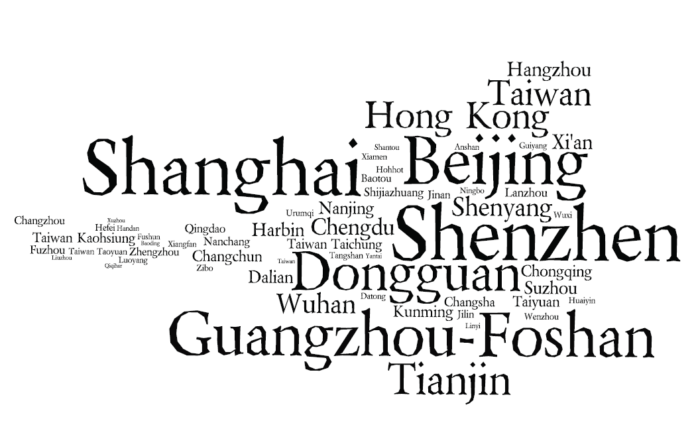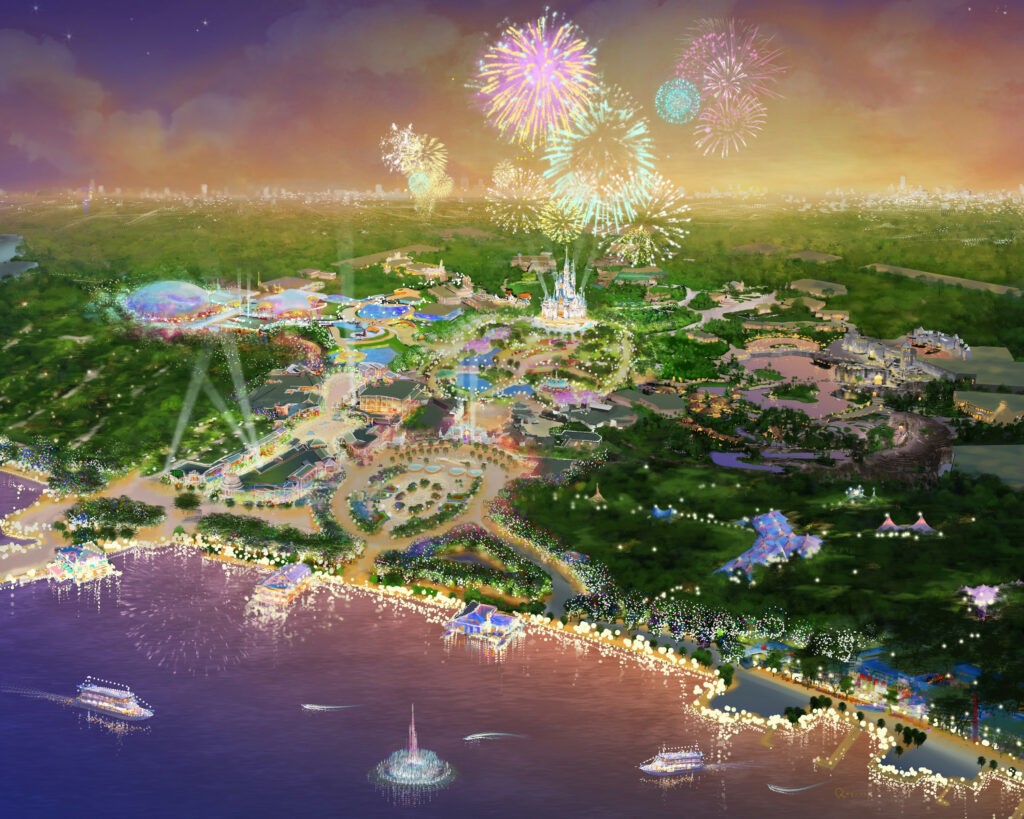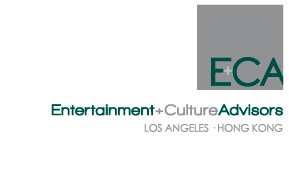International theme park development trends – Focus on China
By Christian Aaen, Principal/Co-Founder and Raymond E. Braun, Principal/Co-Founder – Entertainment + Culture Advisors (ECA)
This article originally appeared in InPark Magazine issue #41, 2012
The opening of Disney Shanghai in 2015 will further cement China’s strong position in the global theme park industry. Asia will continue as the primary region for future growth of the industry in terms of new theme park destination development.
At ECA we are keeping busy with numerous attraction, leisure/tourism and cultural development projects (from major theme parks to indoor urban attractions, large-scale mixed-use entertainment, cultural and tourism development to resort destination projects) throughout Asia including China, Hong Kong, Macau, Singapore, Malaysia, Thailand, and others.
For our work in Asia (in particular China) during the past 3-5 years, we have identified several key development trends that are impacting current and future industry growth in Asia:
- The industry is “moving” to China/Asia – with the biggest new projects being developed in this region.
- One of the fundamental development principles today is: “Don’t just build a theme park, build a destination.” This allows the development economics to be leveraged and optimized. Theme park destinations are attraction-driven, but can include hotels/ resorts, retail-dining and entertainment, cultural components, meeting/convention space, and golf/spa facilities. Appealing to a broad target market covering both tourists and residents and offering multiple things to do and see encourages repeatability and improves the economics and investment returns.
- Large-scale development requires public-private partnerships (PPP). Asia is leading the way, and in particular China, as evidenced by recent significant joint- ventures such as Shanghai Disneyland and DreamWorks East (Oriental) which provide infrastructure, land and even investment for new projects.
The development of theme parks around the world has followed a typical product life cycle curve of inception, market growth, followed by stabilization (mature markets such as U.S., Europe and Japan), and then investment (reinvestment) to diversify products and developments. China is moving from the emerging stage into the key growth stage with several major projects coming up in large urban markets and tourist- oriented markets such as Shanghai, Beijing, Guangzhou, and Hengqin Island/Zhuhai. The number and quality of theme parks will increase significantly in the next 5-10 years as well as overall attendance. There are also several key up and coming second tier cities in China that will see increased entertainment development such as Chengdu, Dalian, Wuhan, Suzhou, Xi’an, Qingdao, Hangzhou, Chongqing among others.
Another distinguishing feature of development in China is that major theme park developments are often part of a real estate development strategy as evidenced by OCT Group and others combining theme parks with adjacent residential, retail and other types of development. In Shenzhen, OCT recently had a soft opening of the 1.2+ million sq ft OCT Bay lifestyle retail and entertainment destination located adjacent to its existing three parks with several indoor attraction components and a large-scale night-time spectacular show. The Chimelong Group based in Panyu, south of Guangzhou, is also setting a new standard in China with major new theme park-driven destination development projects such as its Chimelong Ocean Kingdom theme park and resort in Hengqin Island next to Zhuhai and Macau in Southern China.
We are also seeing the emergence and development of multi theme park hubs such as the Pearl River Delta (Guangzhou, Shenzhen, Zhuhai/Hengqin, Hong Kong and Macau) in Southern China; the Singapore/Southern Malaysia hub (with Universal Studios Singapore and LEGOLAND Malaysia initially); and Hainan Island, China (future potential).
Within China, we believe there are several up-and-coming theme park attraction destination hubs centered around Shanghai (Yangtze River Delta/YRD), Beijing/Tianjin (Northern China), Chengdu/Chongqing (Western China), and Southern China (Pearl River Delta/PRD) and also Hainan with the potential to emerge as not just the Hawaii of China but the Central Florida of China with multiple themed destination attractions.
The development of major new parks in the global theme park industry over the years have had significant impacts on the nature and dynamics of worldwide theme park industries, notably: Walt Disney World (Orlando, Florida, U.S.A.); Tokyo Disneyland (Japan); and Disneyland Paris (France).
We expect that the Shanghai Disneyland Resort (opening 2015) and other pipeline destination theme park projects in Southern China could have similar effects in the Chinese market. It will raise the overall quality standards in China and help transform the Chinese theme park industry as well as benefiting the leisure, tourism and cultural industries and result in positive regional and national economic impact. Disney Shanghai and other major branded theme park destinations will act as catalysts for other attraction, cultural, entertainment and tourism development in China, which will benefit the region as a whole by expanding the market and growing the overall tourism pie. • • •
Christian Aaen and Ray Braun are Co-Founders and Principals of Entertainment + Culture Advisors (ECA) headquartered in Los Angeles (Beverly Hills), California and with a regional office in Hong Kong headed up by Janice Li, Senior Associate. ECA is an international advisory firm focused on economic and market analysis for world-class destination entertainment and cultural development projects throughout China and Asia. Email: [email protected] / [email protected]. Further information on ECA is available at www.entertainmentandculture.com.
Key Themed Entertainment Projects in China
- Beijing: Multiple major theme park proposed including Monkey Kingdom, upgrading and expansion of existing parks and pipeline urban entertainment/cultural developments
- Shanghai: New Shanghai Disney park will help spur additional expansion of the industry in 2015 with multiple major theme parks proposed in the region. Expansion of OCT Happy Valley (second gate)
- Hangzhou: a proposed Hello Kitty Theme Park (2014/15)
- Guangzhou/Shenzhen – Pearl River Delta: Large scale PRD market with strong potential as emerging multi theme park destination hub. Reinvestment and expansion of existing Chimelong Resort and OCT Parks – multiple large-scale theme parks proposed
- Hengqin Island/Zhuhai: Chimelong’s upcoming Ocean Kingdom theme park and resort development with first phase opening in 2013 and thereafter with multiple parks and hotels/resorts
- Macau: Multiple large-scale integrated resorts (IRs) with entertainment and attractions proposed in next 2-5 years
- Hong Kong: Both Ocean Park (2012) and Hong Kong Disneyland (2013/14) are in the process of completing major expansions and new lands in their parks
- Hainan Island: Several major commercial theme park projects in the planning stage from Sanya up the coast to Wencheng as well as Haikou including the Lingshui Ocean Theme Park, Hainan Aerospace Theme Park, among others (2014/15+)
- Multiple Second Tier / Third Tier Cities: regional theme park development by OCT Group and other Chinese developers
Key Chinese Developers
- OCT Group (Overseas Chinese Town) market leader in China for regional theme parks
- Chimelong Group – expanding in Hengqin Island
- FantaWild – expanding multiple locations in China
- Haichang Group – expanding aquarium operators and park developer.
- Large Chinese real estate developers are also entering the marketplace including: R&F Guangzhou, Dalian Wanda Group, China Resources (CR) Land, China Merchants (CM), and others.








